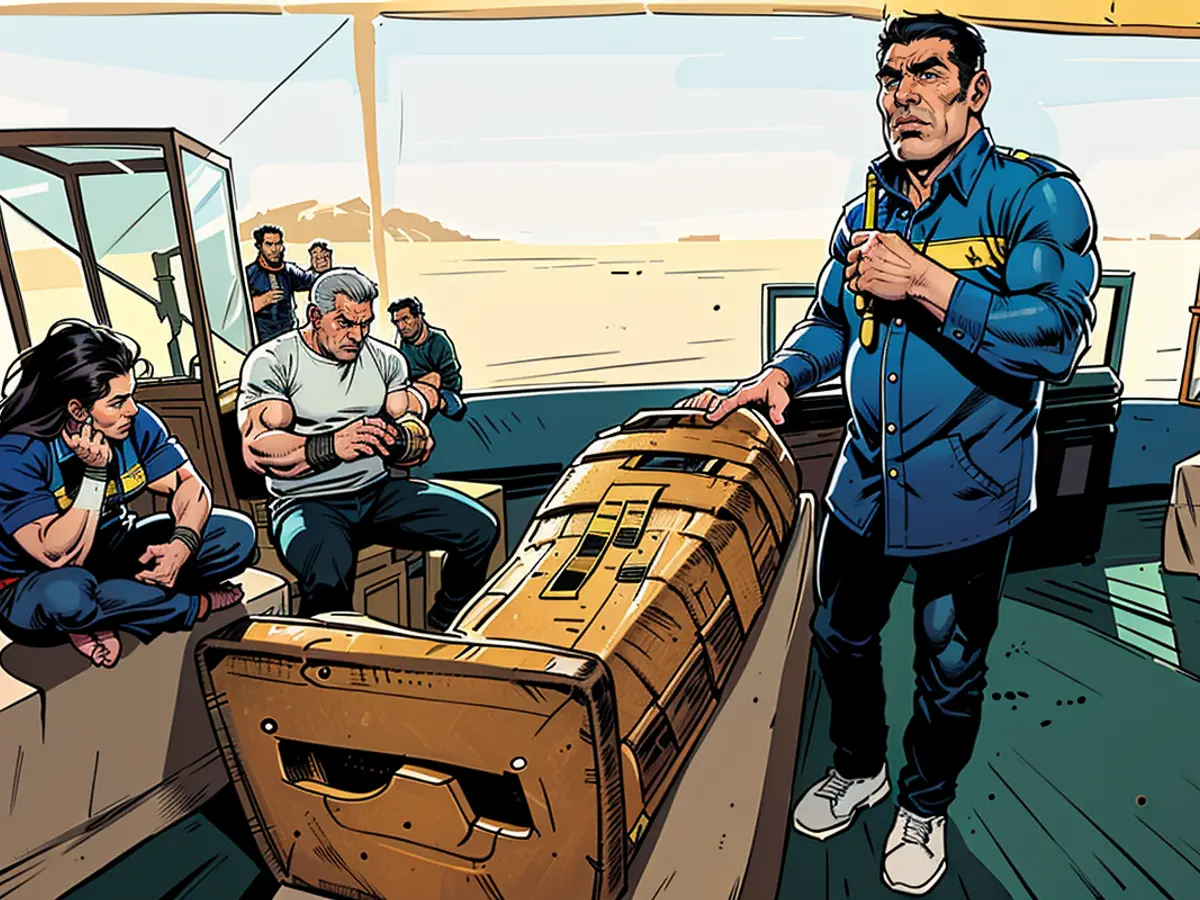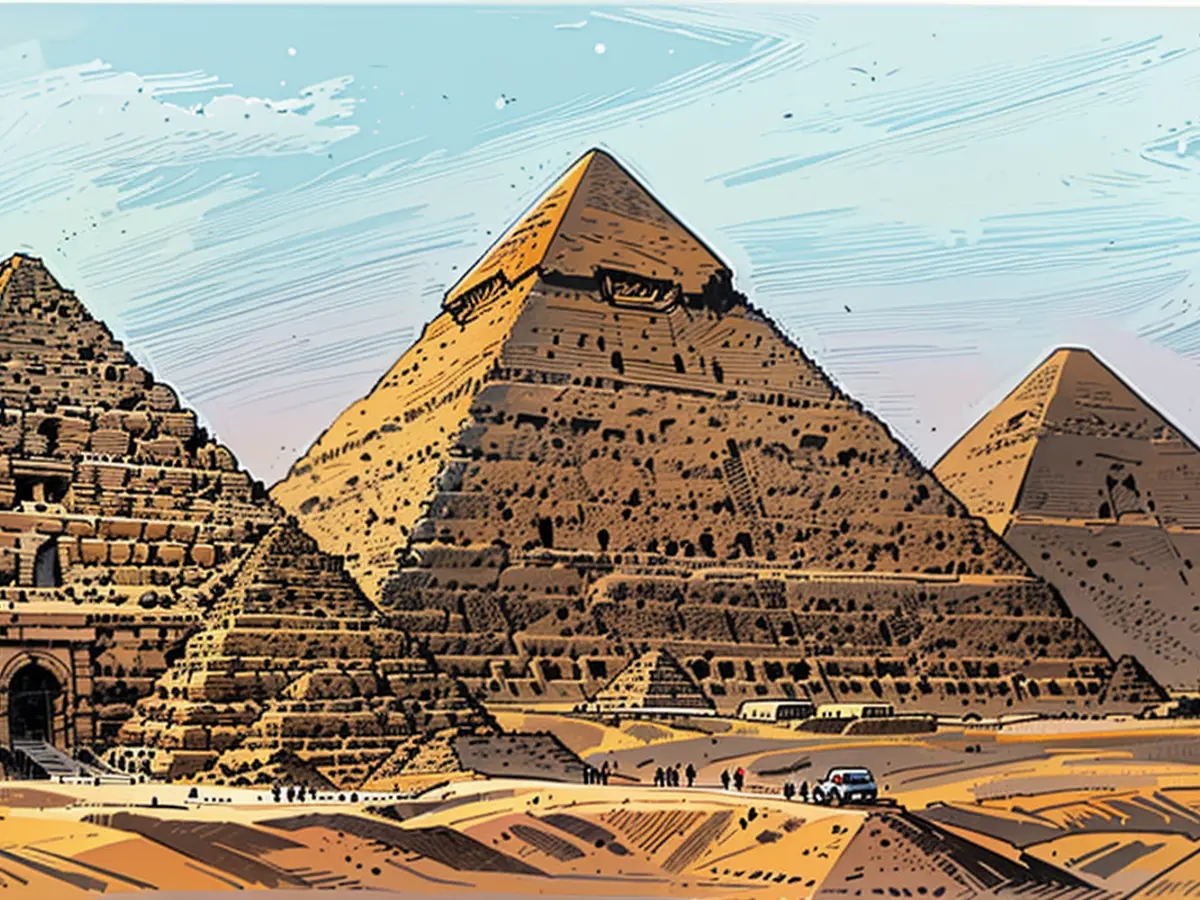Ramses II made everyone crazy
Regarding the upcoming exhibition at the Odysseum in Cologne inspired by Harry Potter and the Dinosaurs of Jurassic World, the following text focuses on a real historical figure. And what a figure. Ramses II., also known as Ramses the Great, lived around 1300 BC, reigned for 67 years as Pharaoh, and left his mark not only architecturally but also reproductively on Ancient Egypt. The traveling exhibition sounds like an Indiana Jones film: "Ramses and the Treasures of the Pharaohs" presents 180 artifacts from July 13. There are also, as is customary these days, a few interactive games. ntv.de spoke with one of the most renowned archaeologists in his country, Mostafa Waziri, who has been the long-term General Secretary of the Egyptian Supreme Council of Antiquities.
ntv.de: You were recently in Cologne to get a sense of the exhibition site, particularly with regard to security. Is everything ready for the priceless exhibits?
Mostafa Waziri: Yes, the inspections went well. We like the Odysseum very much. It's very large, centrally located, and we can protect it optimally.
How do the objects travel?
In a special cargo aircraft. It's very important that we pack the pieces extremely well, for which we have the best company in the world. And of course, we don't travel without extensive insurance.
Has anything been stolen or damaged before?
No. I have been involved in organizing such exhibitions for 25 years, and we have never had any problems.
Why Cologne for this exhibition?
Firstly, because Cologne is very centrally located in Europe. But mainly because the Germans are very educated people who have a great love for the treasures of ancient Egypt. I see many tourists from all over the world in Egypt, and of course, the Germans visit the country specifically for the culture. They buy a book about its history, which they actually read, then visit the Pyramids or the Valley of the Kings and continue to read and delve deeper into what they have seen.
Are you also an ambassador for your country and culture?

Of course. We want to arouse curiosity and interest in Egypt with Ramses. Certainly, some will decide to take a vacation in my wonderful country after experiencing the exhibition. And for those who cannot or do not want to, a significant part of Egypt comes to Cologne.
Why is ancient Egypt so fascinating?
We are dealing with ancient monuments that were built thousands of years ago. The people in Egypt were really brilliant in their time, they had immense and invaluable knowledge. Building a pyramid that lasts thousands of years, something we couldn't do today.
The Colonge Odysseum has had exhibitions on Harry Potter and Jurassic World in recent years. Is ancient Egypt somehow part of pop culture?
Yes, of course it is. Our exhibition is meant to be entertaining, it should arouse curiosity and wonder. But comparing Ramses to Harry Potter doesn't get us very far. The Germans will recognize the difference and be fascinated by these objects. Some are seeing them for the first time outside of Egypt, and some for the first time altogether.
Besides the 180 artifacts, there are also immersive Multimedia-Elements, through which visitors can experience temples such as Abu Simbel or the tomb of Ramses' great love Nefertari in virtual reality.
It is important for us to create an exhibition for the whole family, for young people, old people, and everyone in between. Everyone should be happy and enjoy our exhibition, regardless of their previous knowledge or life experience.
What was Ramses II. really like as a person?
He was anything but ordinary. We call him rightfully Ramses the Great. He lived to be 90 years old, an almost unimaginable long life for those times. He reigned for 67 years. He had grand buildings erected all over Egypt, and we still find traces of Ramses during excavations. Ramses II. has fascinated me as an archaeologist for decades because he has left us such an incredibly rich legacy. He wanted to make his name immortal, and he succeeded.

Ramses II. was also not inactive in other ways. Ramses II. is said to have fathered around a hundred children.
That's correct (laughs). Ramses II. made everyone crazy. He was a warrior, a tough, hard man. He was a man of power, a man of war. But he was also a man of peace. The peace treaty he signed between the Egyptians and the Hittites is considered the first document of its kind in human history.
What can modern rulers learn from Ramses II?
When you sign a peace treaty, do it from a position of strength. Peace is made as a winner, not as a loser. He started a war with the Hittites, but he also ended it. Ramses knew that if the war didn't stop, everyone would eventually lose.
His own tomb in the Valley of the Kings should not be so small.
I believe that is not really his tomb. I assume that he has another one, as his treasures have not been found yet. His sarcophagus was also not discovered in his supposed grave chamber, but in the Cachette of Deir el-Bahari, a kind of mummy repository.
His sarcophagus is on display in the exhibition, but not his mummy.
No, the body of Ramses II. is in the National Museum of Egyptian Civilization in Cairo.
What other pieces would you like to highlight?

I think we have selected the best artifacts to show and honor the life of this outstanding Pharaoh. There is a large granite statue of Ramses, and his sarcophagus is really beautiful. It was discovered in Egypt in 1881 and has never been outside Egypt for our traveling exhibition. We also have diadems made of pure gold, golden face masks, for example from King Amenemope, a silver arm ring from Scheschonq II., but also some pieces from our excavations in Sakkara since 2018.
What are those pieces?
Mainly animal mummies. We found mummified scarab beetles, the first time ever, as well as cats and even crocodiles.
You led the excavation in Sakkara at the beginning. Were you surprised to find these scarab beetles?
We knew we would find sarcophagi and graves, but we were not prepared for these many mummies. We were very proud of our mission and of having found something that no one had found before.
The excavations in Sakkara are still not completed, but they focused on an area in the Sahara, in al-Minya afterward. There, they discovered the first intact Papyrus in over a hundred years, which their colleagues named the "Waziri-Papyrus". What is it that draws you to such discoveries, why did you become an archaeologist?
The real reason is, you might think it's Ramses the Great (laughs). I come from a village about a hundred kilometers away from Luxor. When I was eleven years old, we went on a school trip there, and in the Karnak Temple, I saw this eleven-meter high statue of Ramses II. and was fascinated. I asked the teacher why it was so big, but he just told me to keep quiet. Later, I wanted to know if my teacher could read the hieroglyphs, but he didn't answer me again. So, I decided to study archaeology to solve these mysteries myself, and when I finished my studies, it was clear to me that I would focus on excavations. A week after I started my work, I found an incomplete statue of the Sphinx on the Eastern Cemetery of Cheops. I knew then that God had blessed me with a good instinct.**
They have been digging for 35 years and are one of the most famous archaeologists in Egypt, having also held various high government positions. Is there still a discovery that you dream about at night?
Most archaeologists dream of Cleopatra's tomb. I don't. It's Alexander the Great's tomb. I don't. It's Nefertiti's tomb. I don't. My dream in life is to find the tomb of Imhotep, the most brilliant and creative architect of the Pyramids of Sakkara. He is revered as a deity, rightfully so. He was a genius who significantly contributed to Egyptian writing and Egyptian medicine.

Steffen Rüth spoke with Mostafa Waziri
The exhibition "Ramses and the Gold of the Pharaohs" will be on display at the ODYSSEUM Cologne from July 13, 2024, for a short time. More information can be found here.
- The traveling exhibition "Ramses and the Treasures of the Pharaohs" will also include artifacts from Ancient Egypt, providing visitors an opportunity to explore the rich history and art of this civilization beyond the Jurassic World-inspired exhibition currently at the Odysseum in Cologne.
- Mostafa Waziri, the renowned Egyptian archaeologist, has expressed his excitement about bringing the "Ramses and the Treasures of the Pharaohs" exhibition to Cologne, as Germany has a deep fascination with the ancient Egyptian culture and its treasures, much like the modern Egyptians themselves.
- As the General Secretary of the Egyptian Supreme Council of Antiquities, Mostafa Waziri has played a crucial role in organizing several international exhibitions, with Cologne being a preferred destination due to the extensive interest in ancient Egypt among Germans and visitors from around the world.






